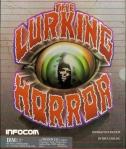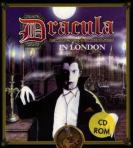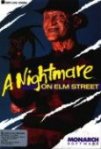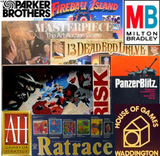There have been so many horror or Halloween-themed games over the years that only a multi-part article can encompass their sheer volume. In fact, horror-themed PC gaming has been going on for some time, beginning with text adventures and continuing with the action-adventures that we play today. This series looks at those games (sorted by their release dates), and made before 2000, because after all, this is a blog about retrogaming!
Today is part two – 1991 though 1993…
Visit part one here: The Halloween List Pt. 1: Horror-Themed PC Games (1986-1990)
 |
Elvira II: Jaws of Cerberus (Accolade, Inc., 1991). A slightly darker sequel set in a horror film studio that has become the stomping grounds of a demon and its undead hordes. Once again, Elvira is trapped inside, and once again, it’s up to you to help her escape. Not as good as the first game, but still enjoyable! |
 |
Elvira Arcade Game (Flair Software, 1991). Playing Elvira in a platform side-scroller? The graphics are decent for its day, and at least Elvira is easily seen against the colorful backdrops of the two levels (yes, I typed that right: 2) of Fire and Ice. This game exists as proof of the Elvira craze thatwas going on at the time. |
 |
Alone in the Dark (Infogrames, 1992). One of the earliest graphic adventure survival horror games filled with creepy moments. Why did the house’s former owner take his own life, and what is the source of the evil that has infested the Louisiana mansion, Delcarto? A deeper review can be found here: Retro Game of the Week – Alone in the Dark (1992). |
 |
Darkseed (Cyberdreams, Inc., 1992). An adventure game based on H.R. Giger’s surreal art. The main character, Mike, falls asleep in his recently purchased house (for far too little of a purchase price). After waking from a horrible dream, Mike discovers that something in the house has planted a seed of darkness (Darkseed, get it?) within his mind, and he has only three days to prevent it from hatching. H.R. Giger’s work is always unsettling, but the sheer amount of bugs in the original release bordered on the horrific. |
 |
Daughter of Serpents (Millennium Interactive, 1992). An H.P. Lovecraft inspired adventure game, this time based in 1920’s Egypt. Players can opt for different skillsets and professions, which alter how NPCs interact with them, though not the overall plotline. This game is also known as The Scroll in its re-release. |
 |
The Legacy: Realm of Terror (MicroProse Software, 1992). The other claimant to the title of earliest graphic adventure survival horror game, but with a more RPG style of play. The player is again stuck in a haunted mansion, filled with Cthulhian creatures, with escape the top priority. |
 |
Waxworks (Accolade, Inc., 1992). Originally slated to be Elvira III, this game uses the same game engine, but is not a game “starring” the lovely Cassandra Peterson. It is, however, absolutely filled with horrific imagery. Its story surrounds an ancient curse that manifests whenever a family has a set of twins, turning one “evil” and the other “good.” But who is who? |
 |
Alien Carnage (Apogee Software, 1993). Also known as Halloween Harry, this platform scroller follows Harry on his quest to rid the world of the aliens who are creating zombies out of humanity. There’s nothing frightening about this game whatsoever, except, perhaps, that people purchased and loved it. |
 |
Alone in the Dark 2 (Infogrames, 1993). Edward Carnby is back, this time searching another foreboding mansion for a missing little girl. And since this time the mansion has the title of “Hell’s Kitchen”, you know it’s not going to be an easy task. It’s survivor horror with a voodoo twist, and featuring an undead pirate that is nothing like LeChuck. (Gratuitous Monkey Island reference!) |
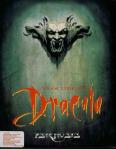 |
Bram Stoker’s Dracula (Psygnosis Limited, 1993). An adventure game based on the movie of the same name, with the player taking the role of Harker as he quests through the dark realm of Transylvania seeking to end the threat of the monstrous Count Dracula, once and for all. The movie was fright-filled; the game is not. |
 |
Call of Cthulhu: Shadow of the Comet (Infogrames, 1993). A brilliant adventure game using the H.P. Lovecraft mythos, wherein the player is cast in the role of an astronomer investigating the return of Halley’s Comet and what it has to do with the weird happenings within the small hamlet of Illsmouth. |
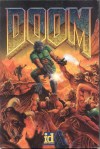 |
Doom (id Software, 1993). A scientific experiment gone wrong opens a gate to Hell on Mars, and it’s up to an unnamed Marine to clean up the mess. This classic shooter game had some scary moments, and some fond gaming memories from those who played it when it came out. |
 |
Dracula Unleashed (Viacom New Media, 1993). Set in London in 1899, ten years after Dracula’s demise in Bram Stoker’s classic novel. The game is another full-motion video with fairly minimal interaction, almost like playing an Endless Quest book on your computer. Who’s the new master vampire in town, and how can they be stopped before they turn your girlfriend into just another bloodsucker? |
 |
Gabriel Knight: Sins of the Fathers (Sierra On-Line, 1993). This adventure game takes place in the dark side of New Orleans, with plenty of voodoo undertones, as the lead character must fulfill his destiny as one of the last Shadow Hunters, destined to stave off supernatural forces. A moody atmosphere and Jane Jensen’s professionally written plot and dialog make this game a must-play event! |
 |
Isle of the Dead (Merit Software, 1993). As the only survivor of a South Pacific vacation gone horribly wrong, the player finds themselves on a deserted island. Except the island really isn’t all that deserted, as it’s filled with various creatures, including a large contingent of zombies. Definitely in the adventure/shooter genre. |
 |
The 7th Guest (Trilobyte & Virgin Interactive, 1993). One of the two early must-have CD-ROM games that created fueled the demand for CD technology, this is a puzzle game masquerading as a Full Motion Video adventure. Not much gore, but there were some genuinely nasty surprises, as well as some very adult situations. Not for the kiddies! (Incidentally, this game is reviewed in greater depth here: magisterrex Retro Game of the Week – The 7th Guest (1993). |
 |
Veil of Darkness (Strategic Simulations, Inc., 1993). A solid horror adventure game that has RPG overtones. The premise is much like the Ravenloft series from TSR: a vampire lord has sealed off the borders of his kingdom and now the villagers are either feasted upon, driven mad, or turned into undead. Or all three! Some gore and lots of atmosphere make this a classic! |
Filed under: PC Games, Retro Gaming | Tagged: 7th guest, call of cthulhu, doom, dracula, elvira, gabriel knight, horror, PC Games, retrogaming, waxworks | 5 Comments »







